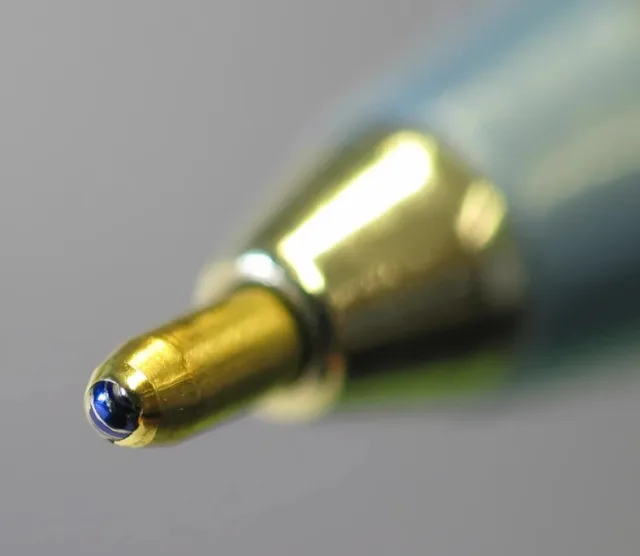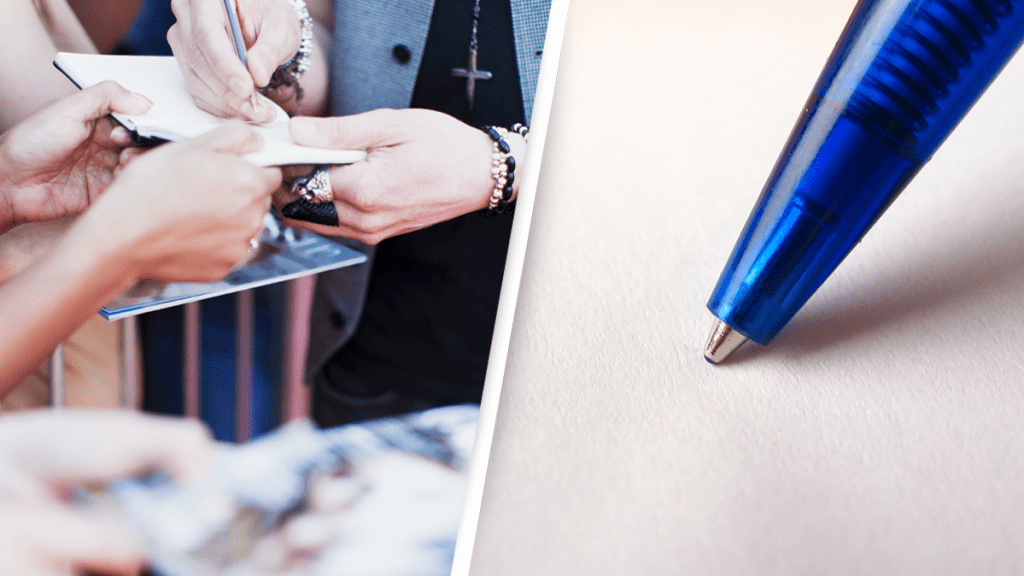The Social Media Reaction: Amusement and Insight
When Claire Foy’s “no blue pen” moment went viral, the internet quickly responded with a mix of amusement and insight. While some users joked about the situation, others offered explanations about why blue ink is often avoided.
One social media user humorously remarked, “I still write in blue ink, draw in black, and avoid signing in red especially if the guy holding the paper has horns!” Another commenter added, “My attorney always makes me sign in blue so they can distinguish the original from a copy.”
Many of these comments touch on the broader historical context of blue ink’s use in legal documents. Blue ink has often been used for signing contracts to distinguish the original from photocopies, especially back when copy machines could only replicate in black and white. However, in the world of autographs, using blue ink carries the opposite risk—it makes signatures easier to scan and fake.

To prevent forgery, many stars now sign autographs in black ink. Image Credit: Getty
Forgery in the Digital Age: A Growing Concern
How Technology Has Changed the Landscape
In the past, autographs were typically exchanged in person, and forgery was more difficult to achieve. However, with the advent of high-resolution scanners and printers, it’s easier than ever for someone to replicate a celebrity’s signature. Digital forgeries have become a lucrative business, and collectors can easily be fooled into purchasing fake memorabilia if they aren’t careful.
Autographs as High-Value Collectibles
Autographs from famous celebrities, especially those who rarely sign, can be worth thousands of dollars. As their value increases, so does the temptation for forgers to create counterfeit signatures. This issue is particularly relevant in the sports, entertainment, and music industries, where signed memorabilia can quickly appreciate in value.
To combat this, celebrities and their representatives take several precautions, such as signing autographs with pens that make replication difficult. In addition to choosing black ink, some stars may use specific markers or pens that leave distinct imprints, adding another layer of authenticity.
Celebrity Strategies for Protecting Their Signatures
Personalized Autographs
Some celebrities choose to personalize their autographs by adding unique details, such as drawings or personal notes, to make them harder to replicate. This extra touch not only adds sentimental value but also serves as an additional measure to prevent forgery. A simple name is easy to duplicate, but adding personal elements to a signature makes it unique to each fan.

Certificate of Authenticity
In the world of high-value autographs, many celebrities or their agents offer a certificate of authenticity when signing memorabilia. This document serves as proof that the signature is genuine and ensures that buyers and collectors can trust the legitimacy of the autograph. Often, these certificates are accompanied by a serial number that can be tracked in an official database, further reducing the risk of forgery.
Conclusion: A Practical Solution to a Modern Problem
While it may seem like a small detail, celebrities avoiding blue ink for autographs is rooted in practicality. With the rise of forgery in today’s digital age, protecting the authenticity of signatures has become more important than ever. By using black ink, celebrities reduce the chances of their autographs being copied, ensuring that their fans receive a genuine keepsake.
Claire Foy’s viral moment may have sparked confusion at first, but her refusal to sign with a blue pen reflects the larger efforts celebrities take to combat forgery. So next time you seek an autograph from your favorite star, don’t be surprised if they pass on the blue pen—it’s all about keeping the real thing, well, real.




